I was thrilled to attend a Zoom Press Conference with Martin Scorsese, on Monday, October 16, 2023 as I’ve been following the film since July of 2017 when Scorsese optioned the book rights. I’ve written two articles for Roger Ebert. com, one is an overview of the Osage Nation’s process in helping gather facts for the movie. Former Osage Chief Jim Gray, and the Osage Nation News website editor, Shannon Shaw Duty, are interviewed. The other is my Zoom interview with David Grann, the author of the book which serves as the source material. That link is posted at the end.
https://www.rogerebert.com/features/the-stories-behind-martin-scorseses-killers-of-the-flower-moon
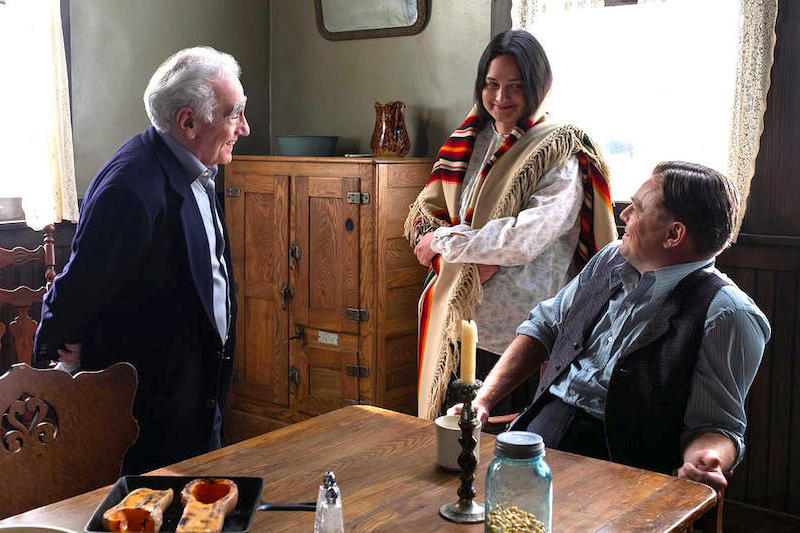
My reactions to listening to Martin Scorsese were that he does care about the Osage Nation and their story. He changed his script and listened to how they wanted to be portrayed. The love story of Mollie and Ernest is the focal point of the story. I also enjoyed hearing his reflections on working with Robert Di Niro and Leonardo DiCaprio. Enjoy…
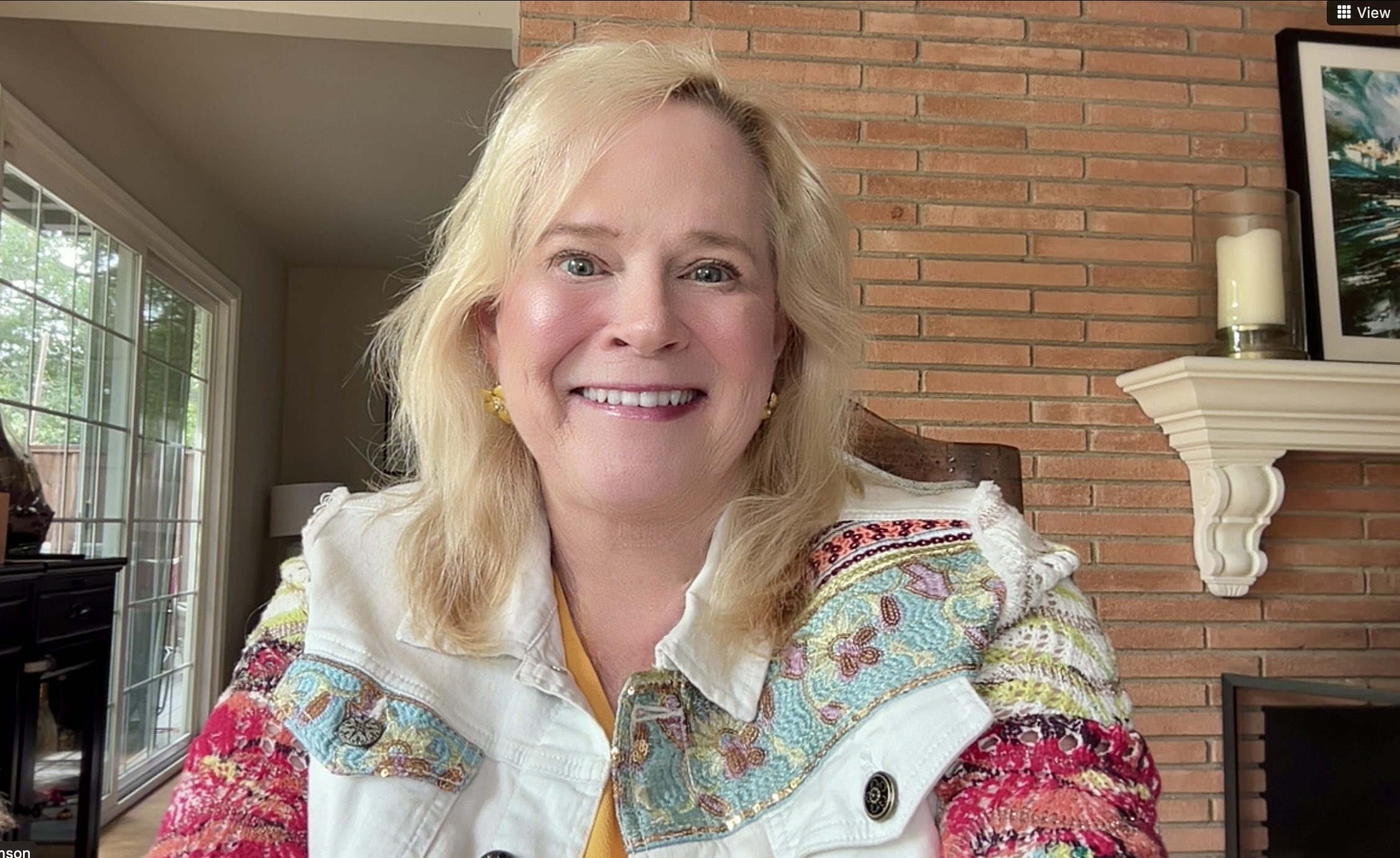
Introduction To Press: I wanted just to say welcome to the global press conference for Killers of the Flower Moon. And we are extraordinarily lucky and honored to have you with us here today, a man who really does not need presentation, as he’s one of the greatest filmmakers of all time, who has co-written, directed, and produced what, in my opinion, is a masterpiece.
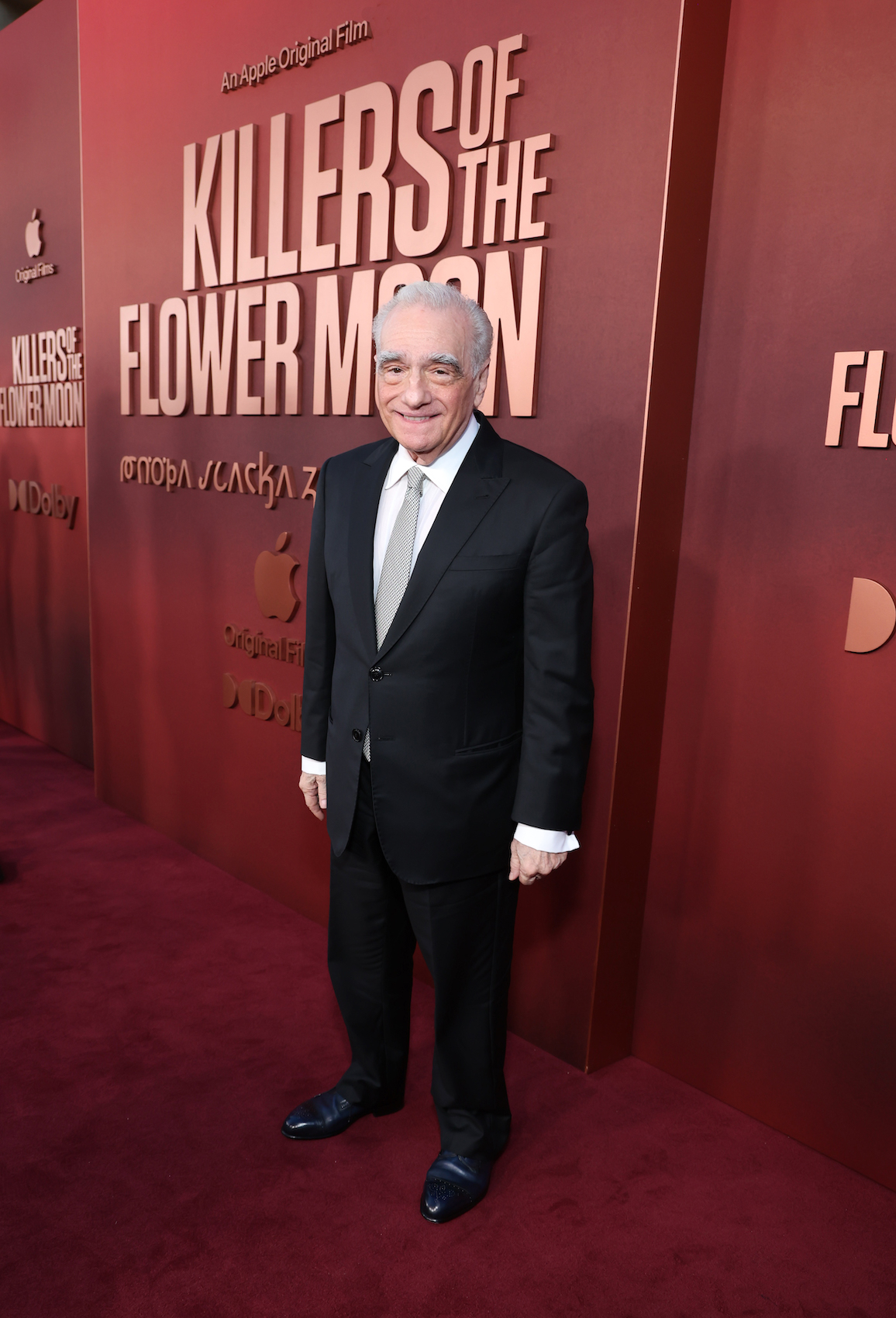
Martin Scorsese [laughs]
Question: Mr. Scorsese, thank you from all over the world. Personally, it blew me away. I was not that familiar with the story, and now I can’t stop thinking about it and the movie. Congratulations once more.
MARTIN: Thank you so much.
Q: What steps did you or the production team take to ensure the Osage community felt accurately represented?
MARTIN: Well, at first, it was very important for me as soon as I saw the book, and I said, “Well, if you want me to be involved with anything that has to do with indigenous people and Native Americans,” I said, “I had an experience in the ’70s where I began to become aware of the nature of what their situation was, and is, still is.” I had been blithely unaware of that. I was too young. I was in my 20s. I didn’t know. And it’s taken me years, and I’m fascinated by how do you really deal with that culture in a respectful way, and also is not hagiographic? It doesn’t fall into, I think, Rousseau-like, the noble native, that sort of thing.
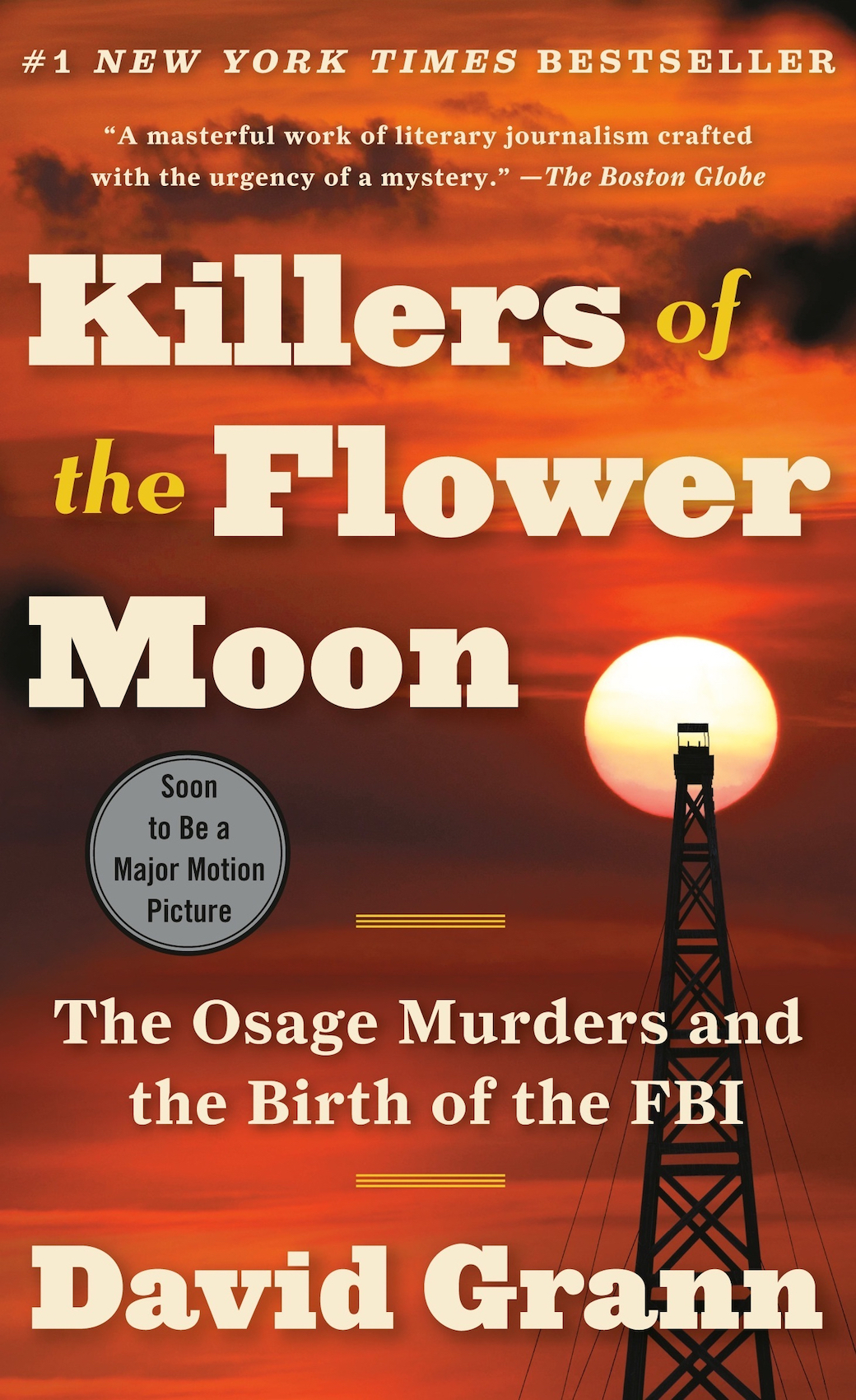
MARTIN: None of that, but how truthful can we be and still have authenticity, respect, dignity, and deal with the truth honestly, as best we can? Having said that, that story, when I read it, indicated to me that this would probably be the one that we could deal with that way. And particularly by getting involved with the culture of the Osage. And actually, placing cultural elements, rituals, and spiritual moments.
Is it realism, mystical realism, or something? No, this is real. You see the dream. The dream is real. The ancestors come. The owl is real, in a sense, in a way. And so, for me, I wanted to know how. I wanted to play with that world in contrast with the White European world.
MARTIN: And I felt that this could’ve afforded us the possibility. Ultimately, what happened was that we were dealing with a script based on David Grann’s book, which is excellent. But the David Grann book also has the subtitle “The Birth of the FBI.” And, for about a year and a half to two years, I was doing Irishman, and Eric Roth and I were working. We took the story of the birth of the FBI as far as we could take it. I wanted to keep balancing with the Osage.
It was getting bigger and bigger and more diffused. And ultimately, this was supplemented by the times that we went out to Oklahoma and met with the Osage. My first meeting was with Chief Standing Bear and his group: Julie and Addie Roanhorse and Chad Renfro. And it was very different than what I expected. They were naturally cautious. I had to explain to them, and I’m just gonna try and deal with them as honestly and truthfully as possible. We weren’t going to fall into the trap. We think of the cliche of victims, the drunken Indian, or all of this sort of thing, yet tell the story as straight as possible.
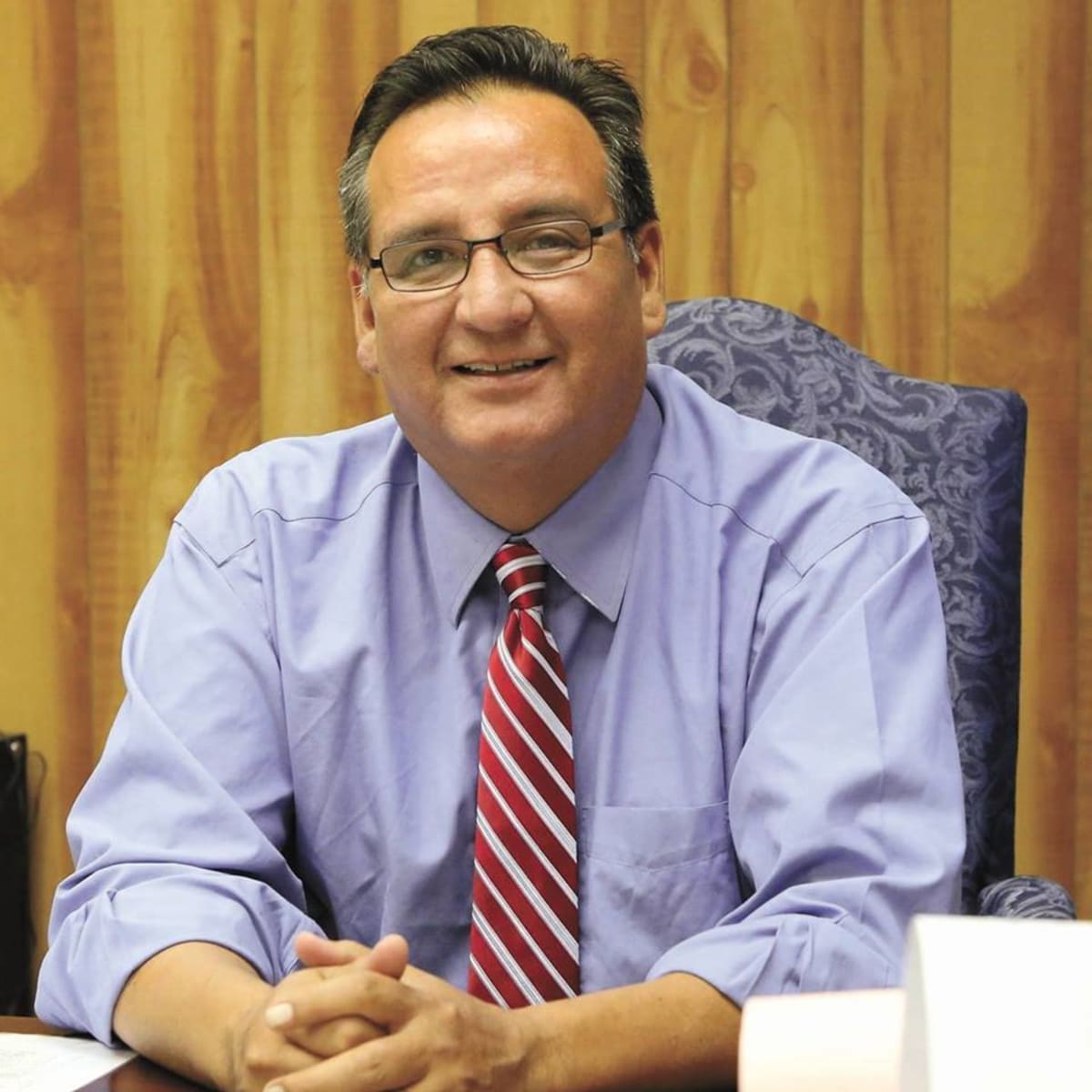
MARTIN: What I didn’t really understand the first couple of meetings was that this is an ongoing situation, an ongoing story out in Oklahoma. In other words, these are things that really weren’t talked about in the generation I was talking to. In the generation above them, before them, I should say. It was the generation before them that this happened to. And so, they didn’t talk about it much. And the people involved are still there, meaning the families are still there, the descendants are still there. And so, what I learned from meeting with them, having dinners with them, Margie Burkhart, the relative of Ernest Burkhart. She pointed out, and a number of other people pointed out, that you have to understand, a lot of the White guys there, a lot of the European-Americans, particularly Bill Hale, they were good friends, you know? One guy pointed out, he said, “Henry Roan was his best friend, and yet he killed him.” And people just didn’t believe at the time that Bill [Hale] would be capable of such things. What is that about us as human beings that allows us to be so compartmentalized in a way?
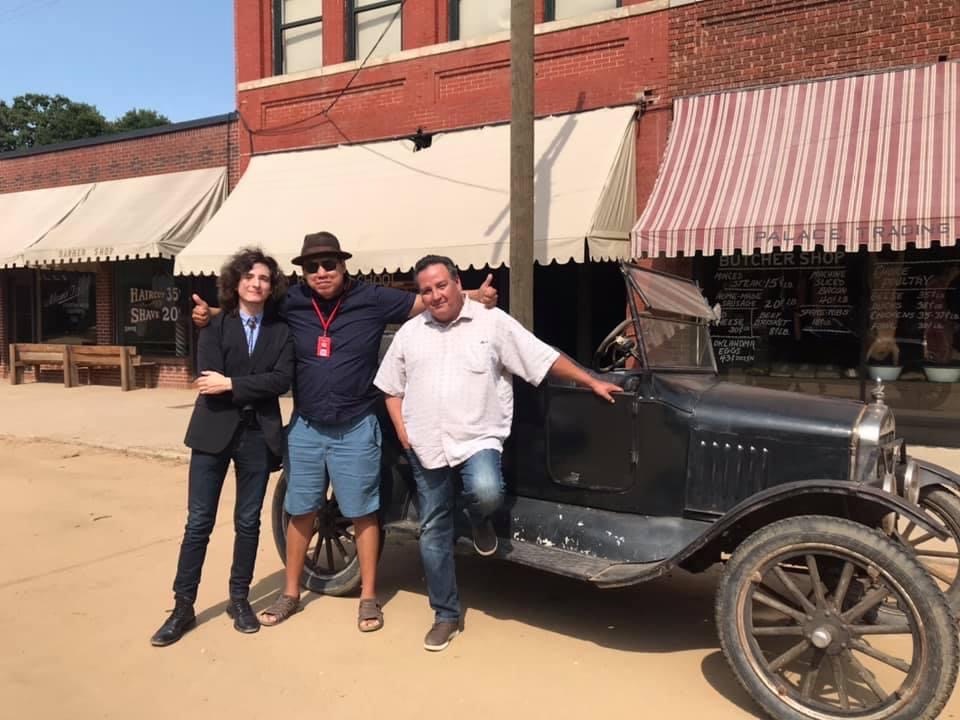
MARTIN: Margie talked about the fact that one has to remember, especially after she saw Silence; that sort of made her a little more comfortable with me doing this. She said, “One has to remember that Ernest,” her ancestor, “loved Mollie, and Mollie loved Ernest. It’s a love story.” And so, ultimately, what happens is the script shifted that way. And that’s when Ernest Leo decided to play Ernest instead of Tom White.
MARTIN: We started reworking the script, and it became gritty. Instead of from the outside in, coming in and finding out who done it, you know, when in reality it’s who didn’t do it. It’s a story of complicity. It’s a story of sin by omission, you know? Silent complicity in cases, certain cases. This is why I had the opportunity to open the picture up and start from the inside out.
Question: The film takes place in Oklahoma, and you were adamant about shooting the movie there. People are curious to know when was the first time you visited Oklahoma, and what was your impression? And how did you begin to visualize the film taking place there?
MARTIN: I think the first time was in 2019, I think. It’s a little confusing because of shooting Irishman, and doing the CGI on Irishman, which was a longer post-production: four months, five months. And then COVID hitting. But I know we were there before COVID. We had at least two trips there before COVID. And for me, you know, I am a New Yorker. I grew up in the Lower East Side of New York. I’m very urban.
MARTIN: I don’t understand weather that much, or where the sun is when you’re on the set. I was very surprised to learn that it set in the west. That’s because I was driving down Sunset Boulevard one time about 30 years ago, and I saw the sun setting. And I said, “That’s great. It’s Sunset Boulevard. The sun sets in the west. Now I get it.” Anyway, when I got there, all I can tell you is the prairies are quite something. They open your mind and your heart. They are just beautiful. And especially, driving on these roads, straight roads through a prairie and on both sides, wild horses, bison, and cows. But the wild horses just out to pasture for the rest of their lives. And it was, like, idyllic. And so, I said, “Where do I put the camera at this point? How much of the sky? How much of the prairie? You know? Should it be 1.85, or should it be 2.35? We gotta go 2.35, you know?” I wanna see more of this land.” And then I began to realize that the land itself could be sinister. In other words, you’re in a place like this, and you don’t see people for miles? You can do anything, particularly, it turns out, a hundred years ago. For me, 1920 is, like, 50 years ago because I was born in ’42, so the 1920s are the way ’90s are now to younger people, the 1990s. When they told me, “Marty, this is a hundred years ago,” I kept thinking, “What? Are we making a period piece?” It’s like normal. I mean, yes, there were old cars, you know? So, I said, “Yeah, it’s not really a Western. It’s normal.” And they’re sayin’, “Marty, this is a hundred years ago.” But when I saw that, I realized this is a place where you don’t need the law. I mean, you have the law, but the law isn’t working that way. The law you can make the law work for you if you’re smart enough, as we know now. But what I mean by that is that it’s still a wide-open territory.
MARTIN: You have the law, but it’s wide-open territory, so the place, as beautiful as it is, can shift to being very sinister. And what I wanted to capture, ultimately, was the very nature of the virus or the cancer that creates this sense of a kind of easygoing genocide. And that’s why we went with the story with Mollie and Ernest because that’s the basis of the love. The love is the basis of trust. So, when there’s a betrayal that way, that’s deep.
Question: To follow up on something you just mentioned, can you discuss how you created the vision? Also, how did you want to tell the story, both historically accurate but emotionally resonant?
MARTIN: This was a constant, the historically accurate. And I should use the word truthful. You know, you can have a ritual, and you shoot a ritual as the way it should be. But it may have been slightly different at the time. We had a lot of support from the Osage authority, the experts who were giving us the indication about how to go about these things: Johnny Williams a number of other people. And so, with them, we tested the accuracy of the rituals, the baby namings, the wedding, the funerals, everything that happened at the funerals, all of this sort of thing. And so, in some cases, there was wiggle room because, quite honestly, I think the last two generations of Osage forgot about or were taken out of their experience because they had to become, like, White European. They had to become, you know, Christians, Catholics, whatever. And so, they forgot about all that. In fact, there’s a new resurgence of learning of the language. And we had language teachers there, and Lily Gladstone learned the language, and so did Leo, and so did De Niro, who really fell in love with it, and wanted to do more scenes in Osage.
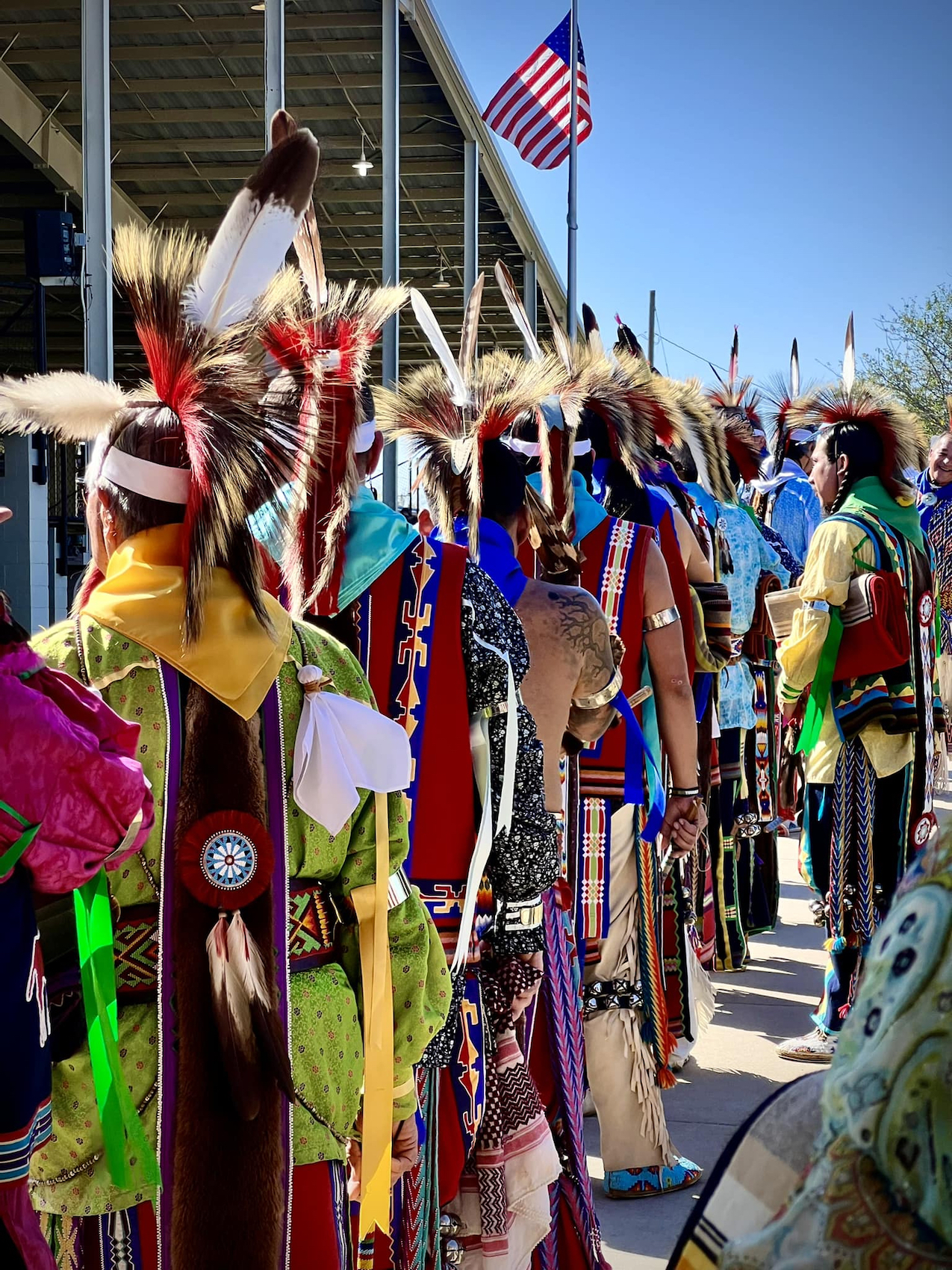
MARTIN: But I suggested that maybe it’s too much for him. But [laugh] he just liked the sound of it. And so, they were all learning again to put their culture back together through this movie. And we were going with them, so if this person puts the blanket on this way, and the baby naming is that [way?], well, one person would say, “Maybe yes.” Another would say, “Maybe no.” Another one would say, “You have a little room here to play with it and have some creative license.” So, that’s the way we did it throughout.
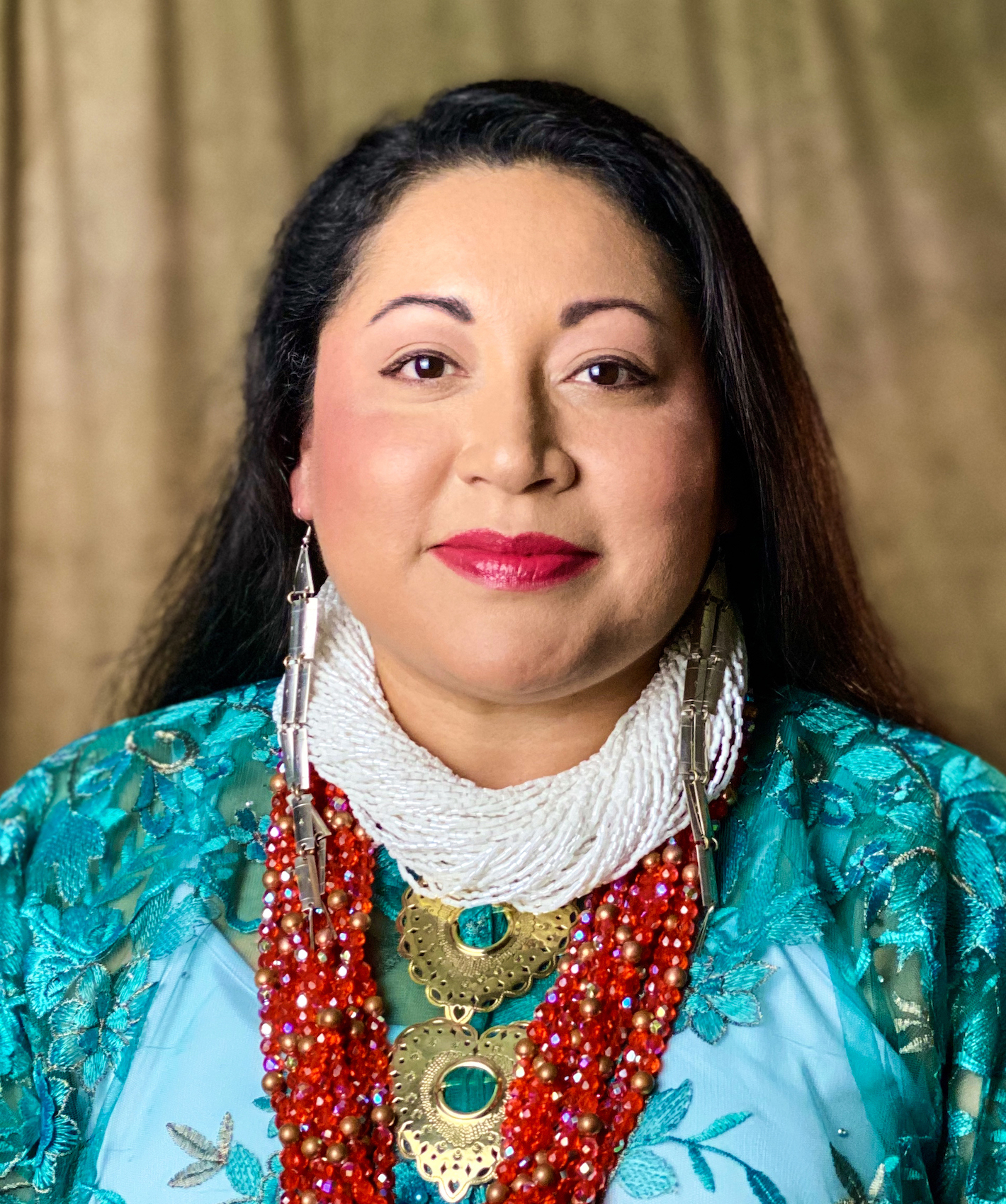
Every scene was done that way, and that was done a lot in pre-production and during the shoot. We had that as a basis. And there are ways that were never insistent, but there were ways they got to me certain information where it was Marianne Bower, for example, was one of our producers. And she’s, like, my archivist. And she was able to help keep it all together between myself and the Osage.
Question: Speaking of Lily Gladstone, who of course, plays Mollie, Ernest’s wife, I think people are going to be really impressed with her performance. Can you talk a little bit about the first thing that you shot with her?
MARTIN: Well, I believe, you know, I saw her, Ellen Lewis showed her to me in Certain Women, Kelly Reichardt’s film. I thought she was terrific. And then COVID hit, and we weren’t able to meet. So after COVID, after the pandemic was calming down, we met on Zoom. And I was very, very impressed by her presence, the intelligence, and the emotion that’s there in her face. But you see it, you feel it, but it’s very, very — you know that it’s all working, something is working behind the eyes. You could see it happening. Also her activism, which wasn’t overtaking the art. In other words, the art was the activist, in a sense. So the art takes over, and in a way which we think then would be more resonant later on, after you see the movie, you may be thinking about it more, rather than a person preaching at you. And I think the first big scene we did was one of my favorite scenes, where she had dinner with Ernest alone. And she’s questioning him, a little bit of an interrogation. What are you doing here? Are you afraid of him? What’s your religion? All this sort of thing.
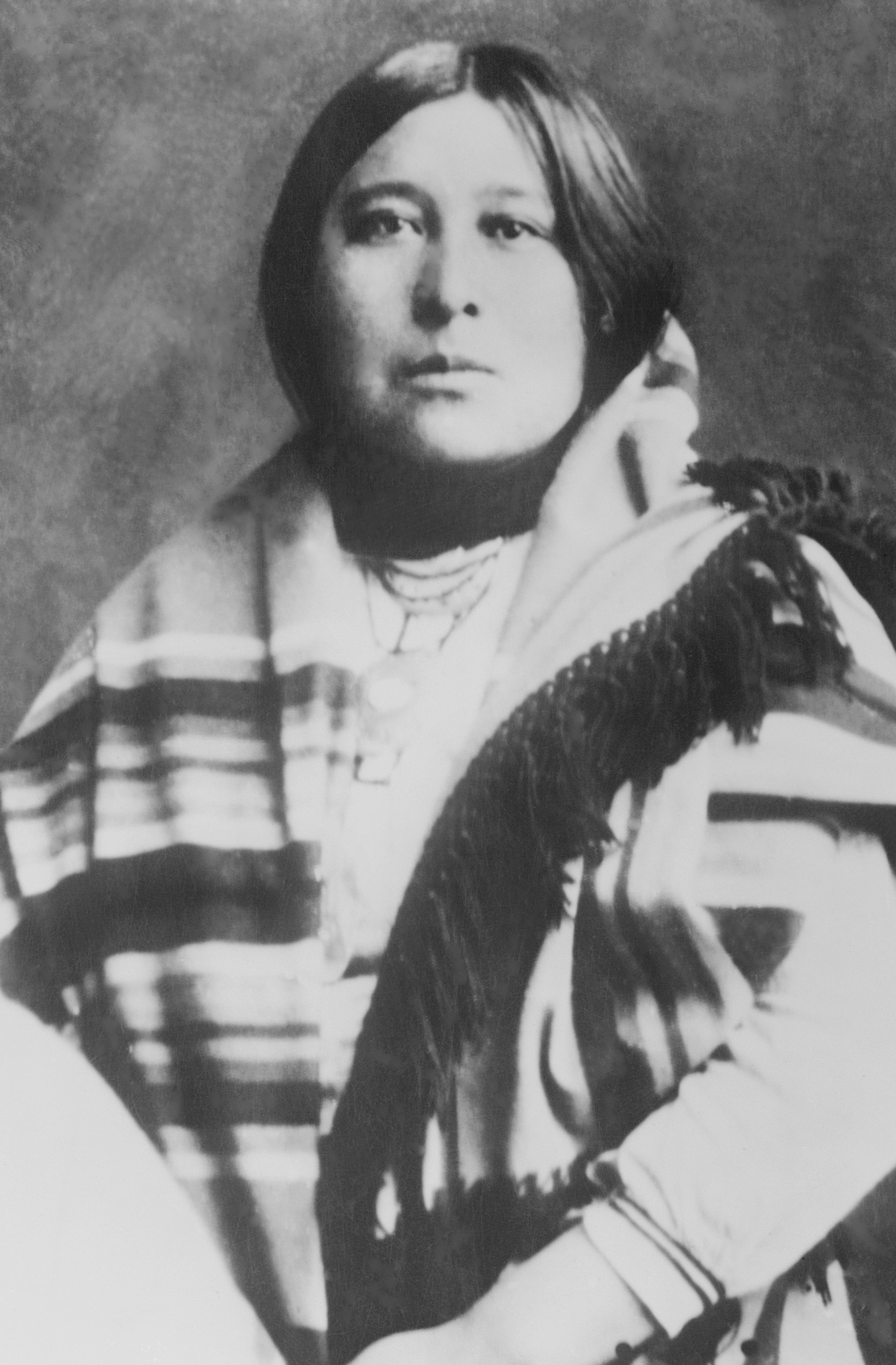
MARTIN: And then you begin to see there the connection between the two, and when she says, “Ha ha ha, Coyote wants money,” and surprisingly, he said, “That’s right. I love money.” This is the other thing. She knows what she’s getting into, and even her sisters later, which is also a scene that we put in with the Osage, with the Native American actors. They said, “What we’re talking about, the guys, well, they’re playing that game, and we’re talking about my husband and talking about that guy with the blue eyes likes you,” and, you know, “Well, I don’t think he just wants money.” “Well, it doesn’t matter. He’s nice. He wants to settle down.” Why don’t we just show that that’s how it could happen?
MARTIN: That’s the way the script was ultimately created, by these moments. So, Lily, there was that scene, and of course, the scene where he’s driving her in the taxi, and it’s only one shot. And he says something about, you know, “I want to see who’s gonna be in this horse race,” and she answers in Osage. She says something in Osage. He goes, “What did you say?” and she says it in Osage again. And he says, “Well, I don’t know what that was, but it must have been Indian for handsome devil.” And that’s an improv, and you see her laugh for real. So that moment, you have the actual relationship, it’s actually between the two actors.
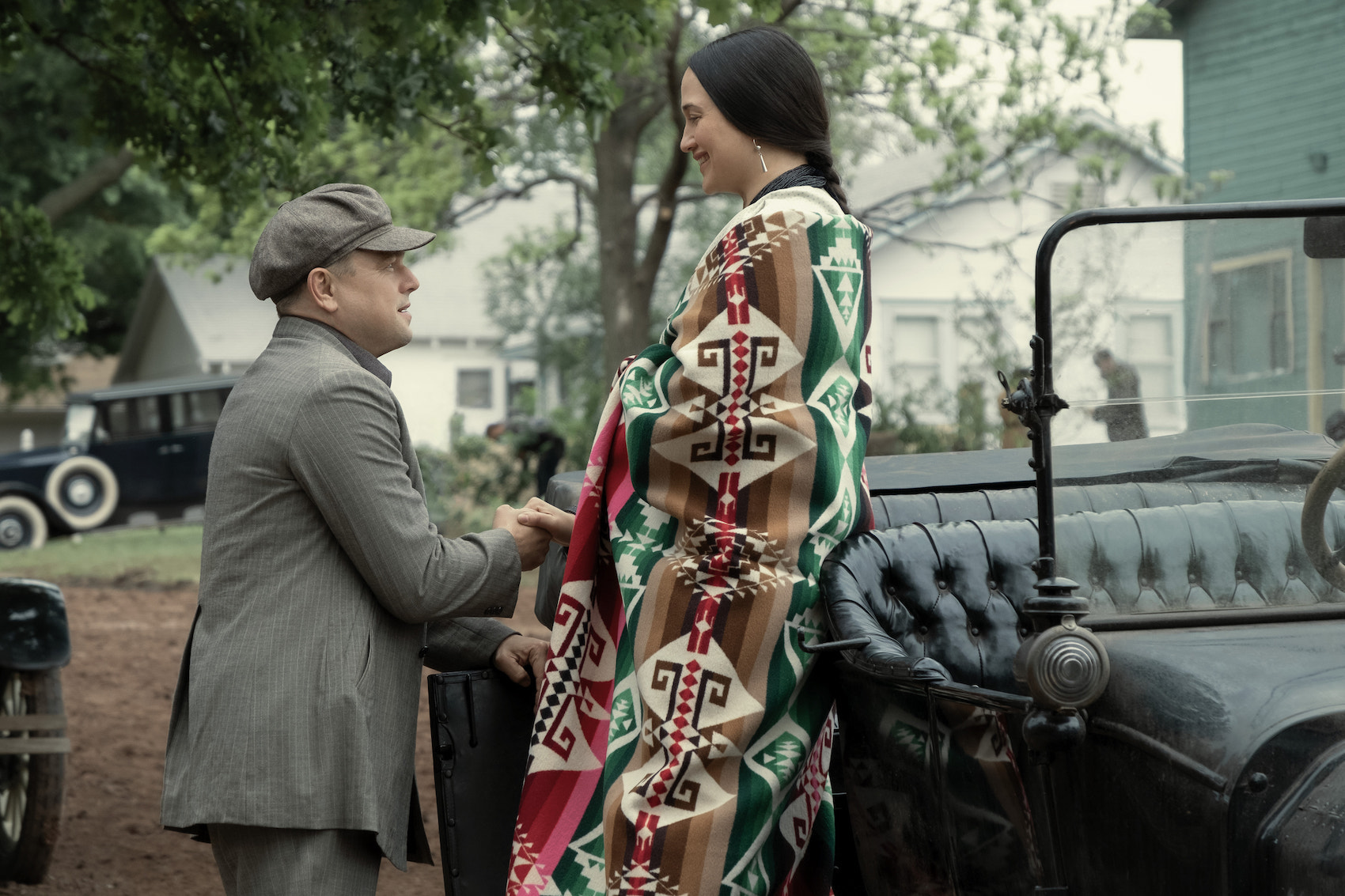
MARTIN: You know, so these were the two moments we felt very comfortable with her. And also we had a feeling that, we needed her. We needed her to help us tell the story of the women there. We would always check with her and work with her on the script. There were scenes that were added, scenes rewritten constantly.
Question: So now let’s talk about some people that you have worked with before quite a bit. You’ve formed a 20-year partnership with Leo DiCaprio and a 50-year partnership with Robert De Niro. Why have you returned to them both so often over the years, and what has stood out to you most about their work on Killers of the Flower Moon?
MARTIN: Well, in the case of Robert De Niro, we were teenagers together, and he’s the only one who really knows where I come from, the people I knew, and that sort of thing. Some of them still alive. He knows them. I know his friends, his old friends, and we had a real testing ground in the ’70s, where we tried everything and we found that, you know, we trusted each other. It’s all about trust and love. It’s what it is. And that’s a big deal, because very often if an actor has a lot of power, and he had a lot of power at that time, an actor could take over your picture.Or a studio gets angry with you, the actor comes in and takes it over.
With him, I never felt that. There was a freedom, there was experimenting, and we were not afraid of anything. I just did it. And years later, he told me he worked with this kid, Leo DiCaprio, a little boy, in This Boy’s Life, and he said, “You should work with this kid some time.” It was just casual. But within a line, something like that, a recommendation at that time, I think in the early ’90s, is not casual.
MARTIN: He says it casually, but he rarely said that you know, rarely tell me. He rarely gave recommendations. And so years go by, and I’m presented with Leo, with Gangs of New York and we worked together in Gangs. He made Gangs possible, actually. He loved the pictures I made, and he wanted to explore the same territory. And so we developed more of a relationship when we did The Aviator. And towards the end of it, there was a kind of something happening, a maturity with him, not quite sure, but we really clicked in certain scenes.
MARTIN: And that led to Departed, and then that became much closer. You know, that was a project where Bill Monahan and the other people were writing all the time and recreating the character that he played, Billy. And so during that time, we really found out that even though there’s 30 30-year difference, he has similar sensibilities. You know, he’ll come to me, and he’ll say, “Listen to this record,” and it’s Louis Jordan and Ella Fitzgerald. I grew up with it. He’s not bringing me anything new, but he likes it.
MARTIN: That’s interesting. Why is he bringing? He’ll call me and say, “You know, I had a cold, and I was looking at Criterion films, and, you know, I wanted to catch up on some of these classics, and I saw this incredible movie. It’s incredible. It’s a Japanese picture. It’s called Tokyo Story. Did you ever see it? This was last year. I said, “Yeah. I mean, it took me a few years to catch up.” I couldn’t even understand the Ozu style, seeing it the first time in the early ’70s ’cause we’re used to Orson Welles [kind of?] you know?
MARTIN: And this guy got it from watching it on a big screen TV. And that’s very interesting to me, to be open that way to older parts of our culture, newer parts of our culture, of course. And the curiosity that he has about other people and other cultures, and there’s a trust, there’s a trust. And even if we can’t get it right away, we know we’ll come up with something. You know, maybe other people have relationships where they come up with it faster. Well, we don’t. We just work it through.
MARTIN: For example, the scene between Leo and Bob in the jail at the end. That scene ultimately was finally written, I think, a few days before we shot it, working with the two of them and working with Marianne and everybody because we had said so much, and it could have gone so many different ways. But what does the picture really need? How much more is there for them to say to each other after all that’s happened, you know? And so we went that way.
MARTIN: It’s really, you know, it’s trust. Particularly doing Wolf of Wall Street, by the way. He came up with wonderful stuff that was outrageous, and so I pushed him. He pushed me, then I pushed him more, then he pushed me, and suddenly [laugh] everything was wild, you know? And, yeah, it’s really quite something. And he had good energy, too, on the set. That was also important, very important, because in the mornings, I’m not really good, and I get on set, and then I’d see him or Jonah Hill or him and Margot Robbie, and Lily, and suddenly they’re all like, “Hey.” I’d say, “Okay, let’s work.” [laugh]
Q: You mentioned music a moment ago. Your films have a musicality through your framing, camera movement, sounds, silences, and where you choose to cut the shot. What informed the rhythm of your work, and what music were you hearing in the making and execution of this book?
MARTIN: The way I like to make pictures, for the most part, I’ve learned, or not intentionally, but I feel it, is like the pacing of music. The boxing scenes in Raging Bull are like the ballet scene in The Red Shoes, where everything is seen and felt from inside the ring, inside the fighter’s head, the way everything is felt and seen inside the dancer’s head, Moira Shearer’s, in Red Shoes. So the covering of the band, singing The Weight in The Last Waltz, doing it in the studio was very much according to the music, to the different bars of music and how a camera would move, etcetera.
MARTIN: And sometimes I play the music back on the set. In the case of Goodfellas, the number of times the end of Layla, for example, was played back as we were doing the camera moves. And so for me, ultimately, the movie is more like I’m trying to get to, like, the movie being a piece of music. So that’s why I do these music films at the same time; I’m trying to get to the pacing and rhythm of something that can be played.
MARTIN: For example, I don’t know, you play a symphony, and you live with it. How many times, oh, I heard the Beethoven Seventh. I don’t want to hear it again. No, you play it. Well, I like the third movement. I want to hear the second movement again. No. I mean, you live with it. You live with it. Or Baroque music. Bach, anything by Bach. So, you know, or Philip Glass, let’s say. And so in a case like this, very often I leave — if a film is playing on TCM, let’s say, I take the sound off, and I watch. It’s living with me; I live with it. And if it’s a Hitchcock or it’s a Ford or, you know, a newer one, whatever, I’m looking, and I can tell there’s a musical rhythm to the pacing of the camera, the edit.
MARTIN: What I mean by the camera is the size of the people in the frame, the editing, and camera movement. You know, I could feel it. And so that’s how I exist, in a sense. So, for me, it’s really about getting the pace of music. And that’s done very carefully on set, but even more carefully in the editing. That’s why this picture is more like, somebody pointed out recently, like Bolero, where it starts slower and moves slowly in circles and in circles, then suddenly gets more intense and more intense, and suddenly goes more and more until it explodes, right?
MARTIN: And so I felt it. I couldn’t verbalize how I am now, but I felt it in the shoot and edit. And a lot of the music that kept pushing me was what Robbie Robertson had put together, particularly, that bass note that he was playing when Ernest dropped her off for the first time at her house, Mollie’s house. She looks at him, she turns, and all of a sudden, you hear boom, boom, boom, boom, boom, boom. I said I wanted something dangerous and fleshy. And sexy, but dangerous. And that beat took us all the way through, all the way through.
MARTIN: Then I added, like, he sent me some [hymn?], and I could pick the music from Harry Smith’s anthology of folk music, all this sort of thing. One particular piece called The Indian War Whoop by Hoyt Ming and His Pep Steppers was very important. Bulldoze Blues by Henry Thomas, which became Going Up The Country by Canned Heat. All of this, again, you know, Dark As The Night, Blind Willie Johnson, with the Flames.
MARTIN: Oh, See See Rider, Ma Rainey. And, of course Emmett, Emmett Miller singing Lovesick Blues, which became the great Lovesick Blues by Hank Williams later on, but this was the first. So all that’s in there, but the drive of the movie is what Robbie put down, and we pulled it through that way.
Q: On that note, we could talk about this movie forever, Mr. Scorsese. First of all, congratulations. Thank you for making this movie that makes us feel, that makes us learn, that makes us live. It’s an absolutely extraordinary film; it blew me away, and I just can’t stop thinking about it. So congratulations on Killers of the Flower Moon. All the luck in the world. And thank you so much for the huge honor of having you with us today.
MARTIN: Thank you.
My Zoom interview with “Killers of the Flower Moon” author David Grann:
Sarah Knight Adamson© October 16, 2023
